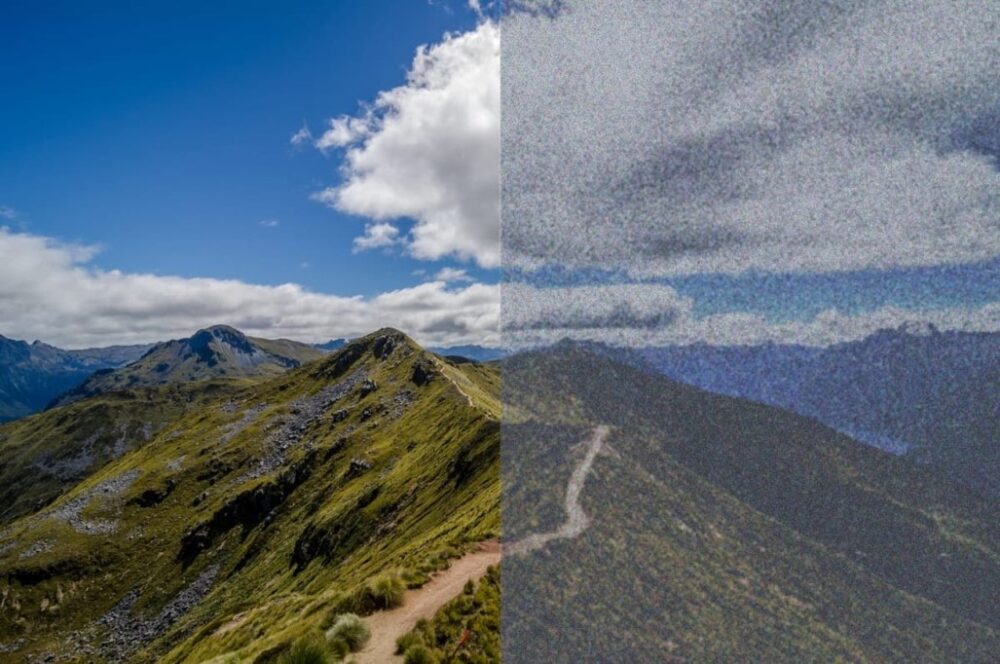For over 200 people across the world, the words “snow” and “static” are neither associated with winter weather nor poor connection on an analog television. This small cohort makes up the documented cases of visual static syndrome, also called visual snow syndrome (VSS). For these people, everything in their sight is overlaid with the characteristic of the syndrome’s name: static in the form of black and/or white dots. Outside of this characteristic of the syndrome, there are also a variety of other symptoms ranging from migraines, vision blackouts, and light sensitivity. These symptoms intersect with the stresses of living with a rare condition; those diagnosed with VSS require a resilient mindset to accept their new perspective.
With symptoms primarily related to vision, it is not unreasonable to assume that VSS is an eye disorder; in actuality, though, it is considered a neurological disorder. Most tests indicate the eyes of these patients are not altered from healthy ones, and in fact, many maintain perfect vision. However, Abby L. Metzler and Carrie E. Robertson describe in a review article published in Current Neurology and Neuroscience Reports that some evidence incriminates the thalamus, a small division of the brain related to sensory processing, as a potential culprit. Dr. Dominic Ffytche, one scientist studying the condition, led an experiment where he induced similar phenomena in healthy volunteers while studying their brain activity and found that these alterations in the thalamus were similar to those of Charles-Bonnet Syndrome, a condition where people who are blind experience visual hallucinations. Additionally, the thalamus is responsible for tinnitus, another symptom that 63 percent of VSS patients report.
However, the thalamus irregularities do not explain other symptoms such as the migraines that 58 percent of patients endure frequently. In fact, visual static was often misdiagnosed as a migraine aura, a visual disturbance during a migraine, because of the overlap between these conditions before receiving its own diagnosis criteria in 2013. The diagnostic difference between the conditions largely comes down to time span, as VSS is constant whereas migraine auras only occur during a migraine. Because of these similarities though, physicians draw from treatment for migraine auras — although with limited success. Further still, there are theories related to the occipital lobe as well as the lingual gyrus, both being other sections of the brain related to eyesight. With numerous theories but so limited data, it is difficult to place significant weight on one over the other.
The most crippling aspect of any study of visual snow is its limited application due to the rareness of the disease and therein lies the greatest struggles of the disease — the isolation.
The most crippling aspect of any study of visual snow is its limited application due to the rareness of the disease and therein lies the greatest struggles of the disease — the isolation. With a lack of explanation and a lack of treatment, those experiencing VSS fall into a difficult category even further complicated by the lack of public knowledge regarding the condition. These differences breed stigma, as rare conditions unfortunately do.
A more direct account of this stigma comes from my own sister, Isabelle Brown, who was diagnosed with VSS in late 2015 following a series of vision blackouts. She describes the process of diagnosis as “long and torturous” because of the layers of authority she had to work with, “bucket loads of testing,” and the physician’s lack of knowledge. In fact, Isabelle recalls almost receiving a spinal tap and only being saved by a more experienced doctor recognizing the condition based on her description of her vision as “static.”
Even the most well-intentioned comments illuminate the stigma and lack of knowledge accompanying a rare disease.
Her primary physical complaint is light sensitivity, which draws attention to her condition. Sometimes she needs to wear sunglasses to avoid eye-strain when watching videos in class, and she cannot look at bright lights for over five minutes without inducing a migraine and burning pain throughout both of her eyes, circumstances that do not go unobserved by her peers. After years of coping with the condition, a frustration Isabelle details is when others, even good-naturedly, attempt to relate by claiming they experience it too, but she quips that “really they just were dehydrated and did not eat enough food.” Even the most well-intentioned comments illuminate the stigma and lack of knowledge accompanying a rare disease.
Though, one method to combat this stigma: greater public awareness, which hopefully this article may provide to some extent. Because for those living with the condition, their perspective must shift, literally and metaphorically, to see the true picture; so, a willingness to learn is the least anyone else can do.
Sources:
Current Neurology and Neuroscience Reports (2018). DOI: 10.1007/s11910-018-0854-2




